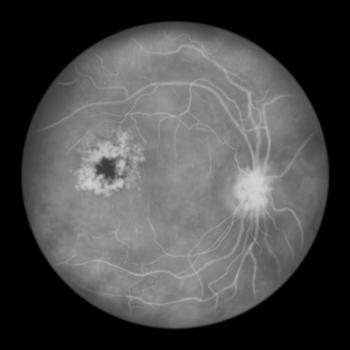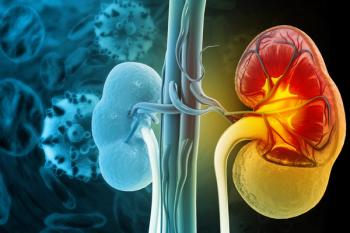
Precision Medicine, Biomarkers, Advancements in Chronic Kidney Disease Treatment
Coca notes the importance of precision medicine in CKD risk assessment and describes the potential impact multiple therapies can have on future CKD prediction and treatment in the future.
In an interview with Pharmacy Times, Steven G. Coca, DO, MS, professor of medicine at Icahn School of Medicine at Mount Sinai, associate chair for clinical and translation research, Department of Internal Medicine, director of clinical research, Division of Nephrology, discusses early identification of chronic kidney disease (CKD), potential markers to predict the onset of CKD, and the importance of considering clinical variables for individualized treatment. Coca will be presenting at the panel “Precision Medicine in the Prediction of Kidney Disease Progression in Diabetes” during ASN Kidney Week in Philadelphia, Pennsylvania (November 2, 2023, to November 5, 2023).
Pharmacy Times: Early identification of chronic kidney disease (CKD) is crucial for implementing strategies to slow down kidney function loss. Can you elaborate on the latest potential markers that can be applied in clinical practice to predict the onset of CKD?
Steven Coca: With patients with apparently normal kidney function, there are still approximately 40% of patients there who if they have albuminuria tested again in the in the urine albumin-creatine ratio (uACR), who have an elevated uACR that will be greater than 30 mg per gram that put them into stage 1 or 2 CKD, depending on their glomerular filtration rate (GFR). GFR above 90, they'd be G1—and then either A2 or A3 albuminuria—if their GFR is between 60 and 89 and they have A2 or A3 albuminuria, they would be in stage 2. By using albuminuria in that you can identify patients before they've had a GFR drop stat and cystatin C is another measure now that can help refine the precision of estimated glomerular filtration rate (GFR) assessment. Since creatinine is not a perfect marker of what we are really trying to measure which is measured GFR. Even that being said, when studies have compared measured GFR and eGFR, either based on the CKD-EPI EGFR, serum creatinine equation or the combined equation with cystatin C, there is still notable discrepancies in many individuals, and there's only about 50% to 67% concordance with CKD stage when comparing these estimated GFR calculations based on creatinine, cystatin, and true measure GFR.
Furthermore, albuminuria has a lot of variation depending on many factors, including within an individual upon repeat measure. So, there has been a big effort to find other markers that can identify patients who are at risk in either very early stages or somewhat mid-range levels of CKD, and the hope is that with all this new science that has emerged over the last decade or so, we can better determine where patients are in terms of their current kidney health today, and where their kidney health and kidney disease will be in the near future.
Pharmacy Times: How does precision medicine play a role in predicting outcomes for individuals with diabetic kidney disease?
Coca: The first step is risk assessment once you know you have CKD. The fact of the matter is that even in stage G3 CKD, many of those patients will have stable kidney function for many years and may never progress to end-stage kidney disease, and they will outlive [it]. Although the larger problem is lack of awareness of where patients are in terms of their CKD, both on the level of an individual who's having their tests assessed, and by primary care who are dealing with a myriad of problems and not necessarily thinking about early stages of kidney disease. There are also the group of individuals who then see and recognize stage 3 CKD and that induces anxiety because stage 3, of course, the connotation from cancer is you're 1 step away from stage 4 which is metastatic, and by nature of our staging criteria, many individuals with advanced age, just by natural loss of GFR due to aging, can quickly fall under that threshold value of a GFR of 60 and be in G3a CKD. So then the albuminuria helps [determine if they] are G3a A1, low albuminuria less than 30, are the G3a A2, or the G3a A3. That gives you a sense of some of that risk, both for kidney and cardiovascular events.
We also think that precision medicine techniques, primarily through protein-based biomarkers at this stage can add another layer of depth into prognosticating an individual's risk for progression where those 2 clinical variables alone—EGFR and uACR—may not be precise enough, particularly at the stages 1, 2, and 3, where there are a lot of fluctuations.
There's been investigations into potential genetic factors, [genome-wide association study], polygenic risk scores, finding other markers—such as metabolites—there’s a lot of advanced tissue diagnostics going on with transcriptomics and single-cell sequencing for gene expression patterns. Most of those techniques are not ready for implementation in the clinic yet, leaving us right now in late 2023, with the potential for the addition of some of these protein-based biomarkers that have been commercially developed to prognosticate patients risk for progression. The value of knowing the risk of progression, the “so what?” question to all that is, how aggressive are we going to be now. We're in this fortunate circumstance in 2023, where we now have multiple drug agents that have shown efficacy for slowing of CKD.
In diabetic kidney disease, we have SGLT2 inhibitors, we know GLP1 receptor agonist…we have nonsteroidal mineralocorticoid antagonists, and future therapies that will come. So that's at least 3 drugs to potentially add to a baseline glycemic control and RAAS inhibition as your standard of care for [diabetic kidney disease]. In non-diabetic CKD, we have great data on SGLT2, we will have potential therapies that are emerging now for [apolipoprotein L1]-mediated kidney disease…we have so many new therapies for things like IGA nephropathy, membranous nephropathy…so it's an exciting time, but again, we can't apply every drug to every patient due to cost, potential [adverse effects], and just pill burden itself. And so, having an idea of someone's near-term, mid-range, and long-term kidney trajectory, gives you the insight on how aggressive to be in terms of that medication regimen, referrals, activation energy all around, and there is a large subgroup of patients that we do not need to throw every therapy at, again, because you just can't do it for everyone on a resource-based allocation. So that's where precision medicine helps come in.
Pharmacy Times: From your perspective, what impact might these markers and precision medicine have on the future of diabetic kidney disease as well as CKD prediction and treatment?
Coca: Our hope is that now with multiple therapies and multiple biomarkers, that again, add to the story of just clinical variables, can we sub-phenotype these patients and even determine a priority [to know] which patients will benefit most from a drug. So not just know the risk of if they are low, intermediate, high-risk, but [for example,] Patient [A] has [a certain] clinical profile with this biomarker profile, they would benefit most from a GLP1 receptor agonist, [and] Patient B [has] this profile…they would benefit most from SGLT2 inhibitors…and the list goes on and on. As more drugs become available, I think we're going to have to get better and almost become oncologists. They've had a big head start in nephrology, but they subtype their patients, they determine their underlying molecular expression, and the treatment that will likely work best in that individual patient. So, I think that's the goal of where we're trying to move to in the next few years.
Newsletter
Stay informed on drug updates, treatment guidelines, and pharmacy practice trends—subscribe to Pharmacy Times for weekly clinical insights.


























































































































































































































